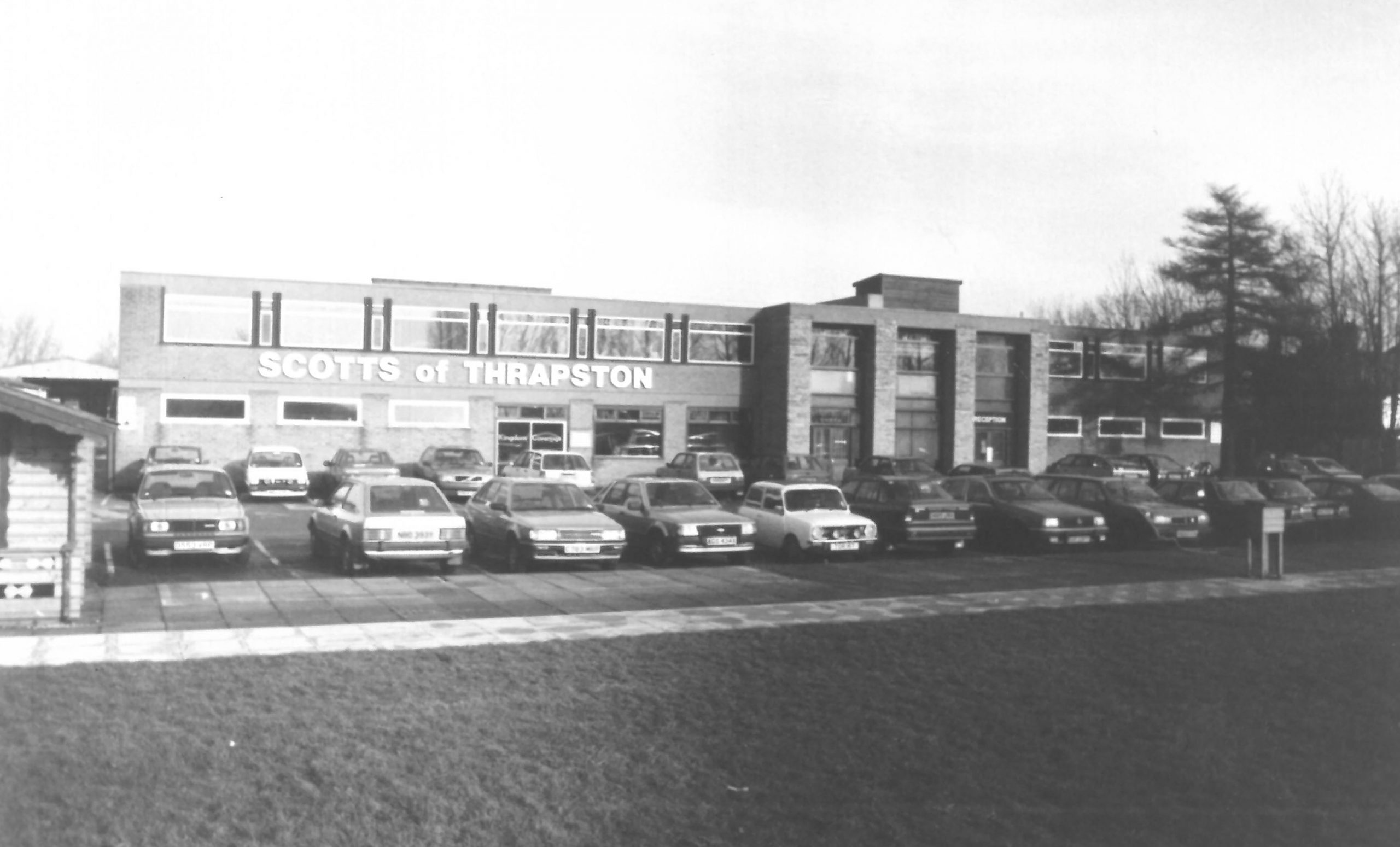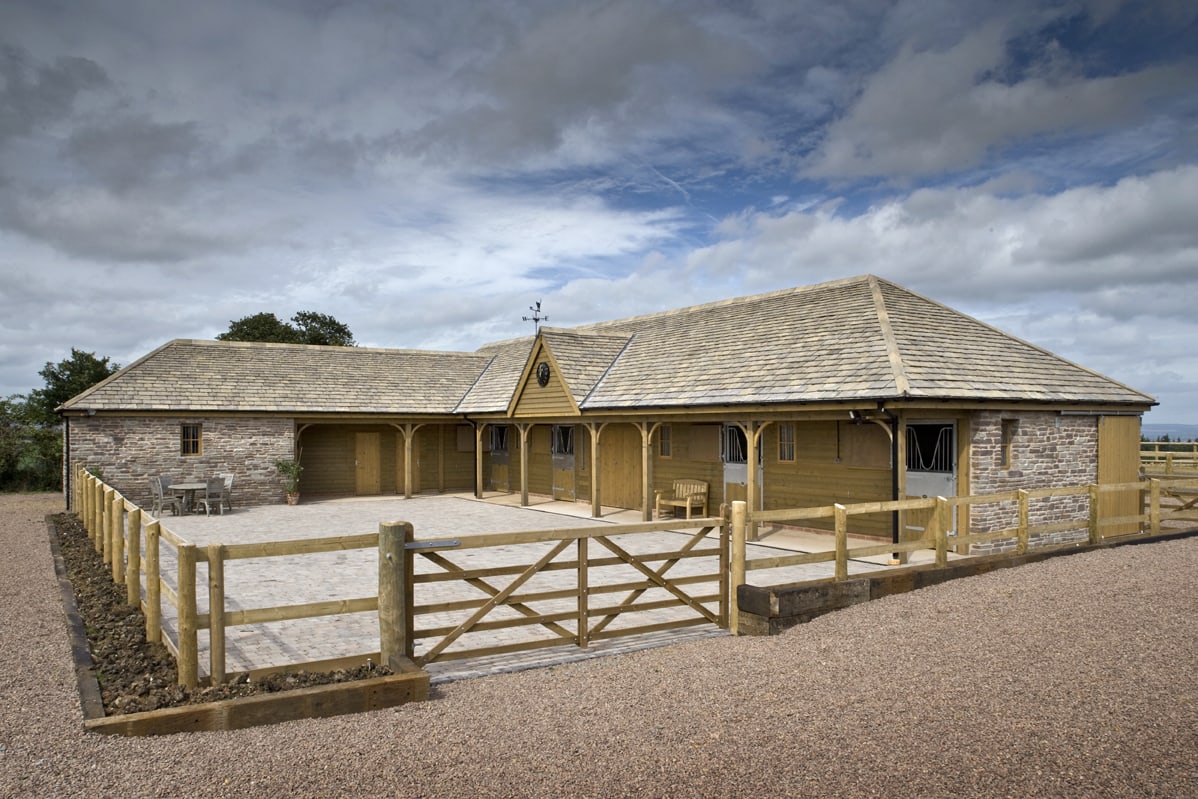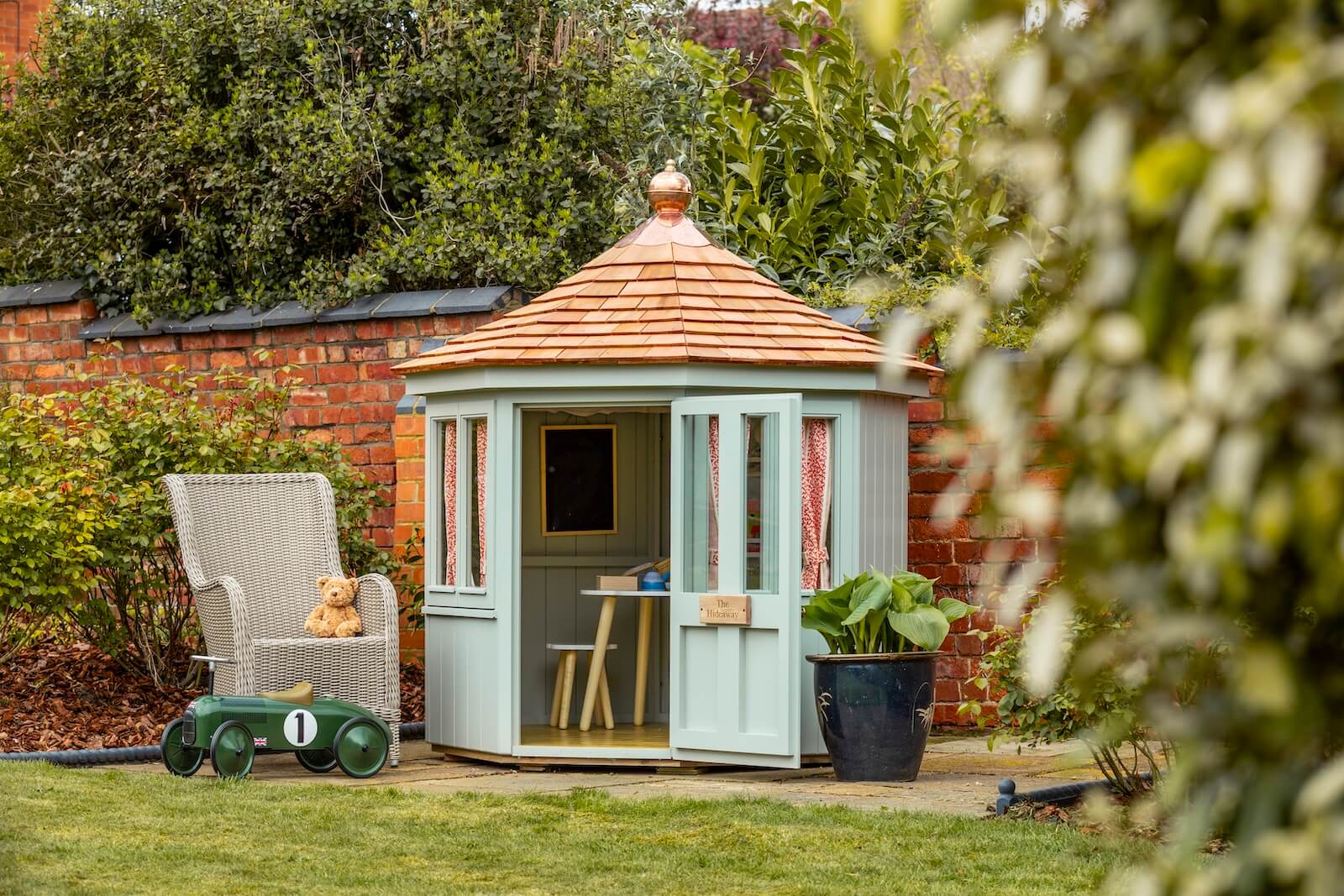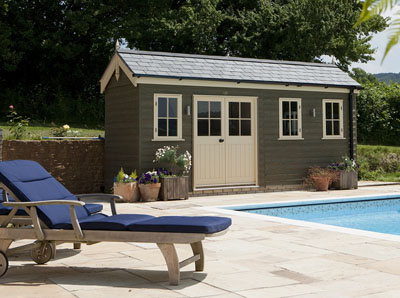When planning your summer house project, your immediate thoughts may turn to its shape and size, the colour of the walls, and what type of doors and windows you prefer. Perhaps you haven’t yet thought about the roof, but this essential component will provide the perfect final addition to your garden building, and your choice of style and materials will contribute to its longevity and the achievement of the overall aesthetic you desire.
Selecting the roof is a crucial step within the decision-making process when designing your summer house. Its shape should complement the style of the building itself as well as that of your home, and your garden layout. It should provide appropriate protection from the elements and be built to last. There are many roof styles and materials from which to choose. In our blog, we explore the options and let you in on the secrets of Scotts’ luxury summer house roofs.
Types of roofs – some considerations
Performance matters
Choose a roof that offers:
- Longevity over decades
- Durability and strength
- Protection from the elements
- Low/no maintenance
- High quality craftsmanship.
Aesthetic appeal
Your ideal summer house roof could:
- Blend with your garden planting and the natural world
- Complement your style of property
- Create a striking feature in your garden
- Support biodiversity and reduce your carbon footprint.
Summer House Roof Ideas
Summer house roofs are available in many shapes and sizes. Choose the style most suited to your project vision and budget but do not be tempted to cut corners by sacrificing quality for lower priced materials.
-
Pitched roof
Roofs can be single or double pitched which means they incorporate at least one slope. A pent roof has only a single slope and is best suited for a small plot where the garden building can be place against a wall or fence. The classic, dual-sloped pitched roof offers a durable structure, and additional headroom and it allows rainwater to drain easily. Pitched roofs can be designed in multiple configurations and can be pyramid shaped, hipped, or asymmetric with slopes of different lengths. Four metres is the maximum height of a pitched roof within permitted development rules.
-
Reduced pitch roof
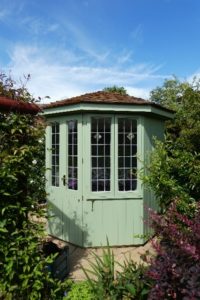
If you are planning to install your summer house within 2m of your garden boundary, your roof height should not exceed 2.5m in height to meet permitted development regulations. Scotts has addressed this issue by offering a reduced pitch roof in both glass fibre and cedar shingle alternatives so you can sidestep the process of applying for planning permission (we always advise you to check the specific rules for your property and locality as these differ across the UK). We can fit reduced pitch modified roofs to at least one size of all the summer house model types in our range except the Newhaven Cornerhouse Summer house. Let us know when you order your summer house and the model you choose will be adapted accordingly.
Roofing materials – maximum protection, fantastic style
The experts at Scotts have identified three main styles of roof that we believe to offer the best options for a luxury summer house building. We are happy to discuss the options with you and assist with the design and creation of your project.
-
Slate roof
A classic roofing material, slate retains its natural beauty for decades and requires no maintenance. The pitch of the roof will affect how it is fixed and laid. Slate is brittle and can be prone to slipping and cracking. It is also heavy, and the price tag is higher than for a slate effect moulded composite alternative (see below). Ardesia slate is crafted from recycled plastics and natural limestone. It is strong and easy to handle, but also lightweight and ideal for harsh weather conditions.
-
Slate effect glass fibre roof
If you like the appearance of slate, you could choose a simulated slate-effect glass fibre alternative. Made from glass reinforced polyester, this type of roof is extremely durable and will provide a maintenance-free roofing alternative for 20-30 years. It also provides protection against UV rays. This type of roof is available on many of Scotts’ summer house models.
-
Lead roof
The use of lead in construction dates back as far as 500 BCE when the Romans used it to line aqueducts. It has been used to form church roofs and adorn architectural features for hundreds of years. It is highly malleable, long-lasting and offers excellent protection against the elements. Its higher cost means that many customers choose a lead effect glass fibre alternative. Scotts can install a lead roof as part of a bespoke package should customers be interested in this option.
-
Lead effect glass fibre roof
A lead-effect roof simulated realistically from moulded composite glass fibre retains the high-quality properties of the metal and makes costs more manageable. This type of roof offers a clean, modern aesthetic and is virtually maintenance free. Install a roof of this type on your summer house and you can allow plants to grow from the top, and cascade down to create an attractive natural feature. Within the Scotts range, the lead-effect glass fibre roof is standard on our 2.4m octagonal Burghley model but you can choose to modify other models or go bespoke and design your own summer house with a roof style of your choice.
-
Cedar shingle roof
To apply a touch of genuine luxury to your summer house, you could opt for a cedar shingle roof that delivers protection and simultaneously creates a stunning natural feature. Scotts uses only Grade 1 Western Red cedar shingles that have a 20-30-year lifespan and offer a rich, warm tone that eventually fades to a classic silvery grey with age. This highly sustainable roof type has a low carbon footprint and will complement the verdure of your garden and the natural world beyond. Cedar shingles require some gentle maintenance, and you will need to clear off leaves and other debris periodically to deter insects. A cedar shingle roof is available as standard on Scotts’ 3m and 3.6m Burghley octagonal summer houses and the 3.6m Newhaven Corner Summer house.
-
Bitumen felt shingle
This less costly type of roofing is durable and weatherproof but thin and lightweight limiting its lifespan to between 15-20 years. It is affordable, relatively easy to install and can look stylish if you choose the right colour (it is widely available in green, brown, red, blue, and black). It can be susceptible to tearing so beware of its proximity to trees from which debris could fall and damage the roof.
-
EPDM
Despite its name, an acronym of ethylene propylene diene monomer, this type of rubberised roofing is made from recycled materials and is itself recyclable so more environmentally friendly than some alternatives. EPDM resembles lead, is exceptionally durable and can last up to 50 years without cracking, rotting, or blistering.
-
Green or sedum roof
For nature lovers and gardening enthusiasts, designing your summer house to accommodate a green roof could create a stunning natural feature in the heart of your outdoor space. A green roof enables plants to grow and thrive, providing an enhanced natural habitat to promote biodiversity and offer a home to those essential pollinators. There are two types to be aware of: an extensive green roof is made from succulents, herbs and mosses, and an intensive green roof contains shrubs and grasses. Both contribute to air purification and are eco-friendly. To benefit from this style of roof, you will need to ensure that your summer house roof structure is reinforced to accommodate the additional weight. Sedum roofs require a water retentive fleece sublayer to promote the health of the plants. A downside to green roofs is their variable appearance in different seasons and lack of control over the speed and direction of growth.
Under one roof
It is worth thinking about what your summer house roof will look like on the inside and how this will support your vision of a premium garden building that you can enjoy all year round. With a basic roof installation, the inside of your summer house could be rustic in appearance and more prone to cobwebs. For a smart and clean alternative, Scotts install a plain cream fabric roof lining as standard on all its summer houses. If you choose a cedar shingle roof, you can opt for an underlining made from MDF that is painted in Off White. To keep your summer house cosy in winter, be sure to install insulation into your roof lining. Scotts offer insulation as an optional extra using Rockwool, made from volcanic basalt, within a breathable damp proof layer that is designed to keep out moisture and retain heat.
Decorative roof features
Finally, you may wish to add the finishing touch of a weathervane or other decorative feature to your summer house roof. There are hundreds of weathervane styles from traditional shapes based on the natural world to bespoke ideas that reflect your hobby including models made to depict yachts, motorcycles, aircraft and even Mary Poppins. Metal finials can be crafted in square, hexagonal and rectangular shapes and made from steel or brass. Or perhaps you would prefer an acorn-shaped finial crafted from timber? Scotts offers a stunning genuine copper sphere finial on all its models except the Sun Ray Garden Room.
Choose the Best Summer House Roof
When you have considered all the options for your choice of roof style and material, now is the time to talk to us about how to bring your dream summer house to life.
If you are still debating the best design for your garden or have any questions about the materials that we use, don’t hesitate to get in touch and our expert team will be happy to advise you.

